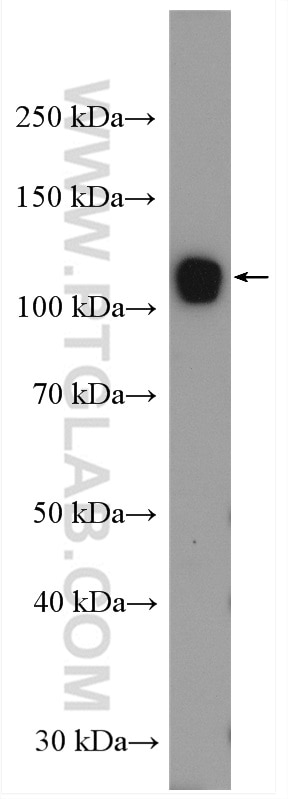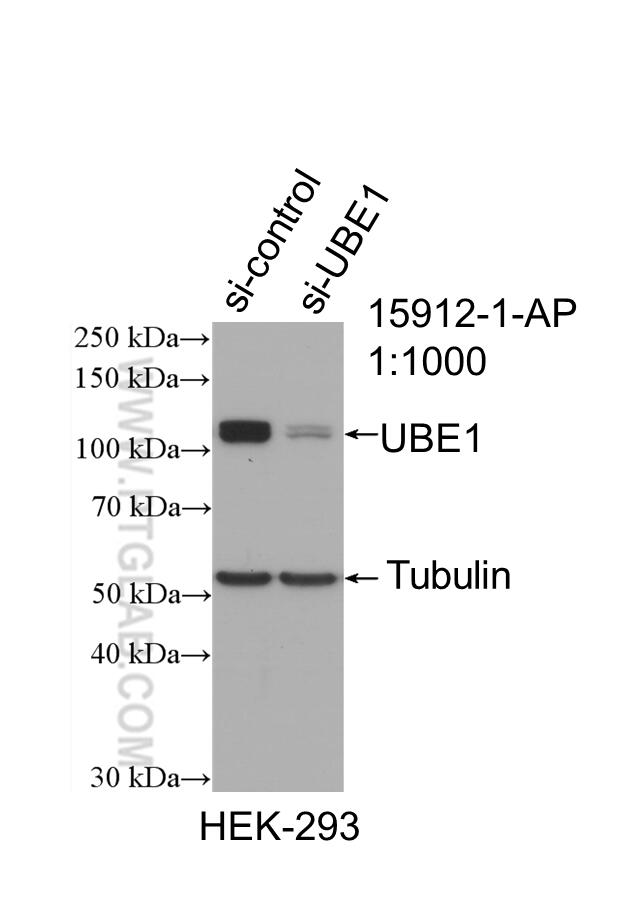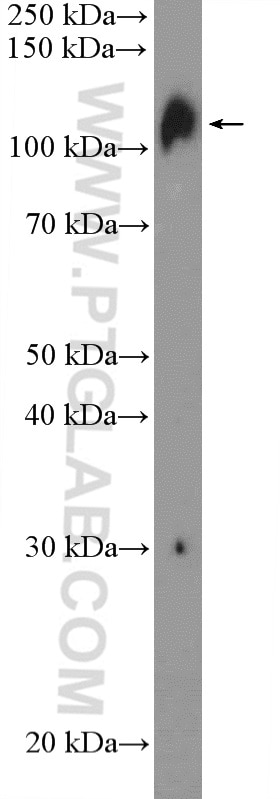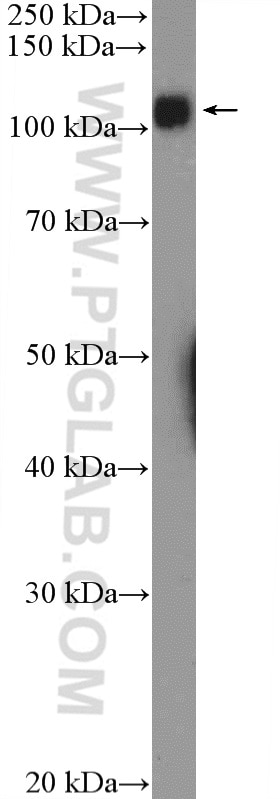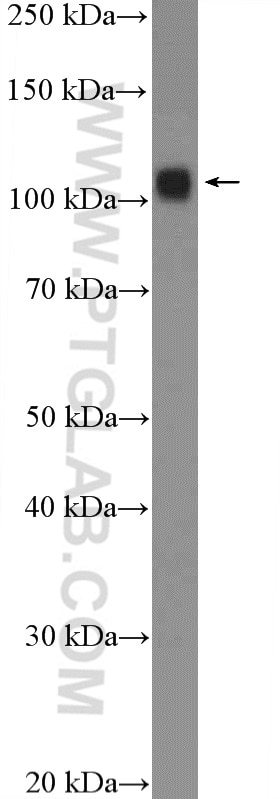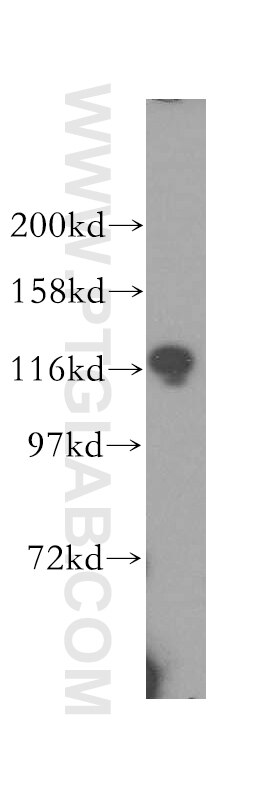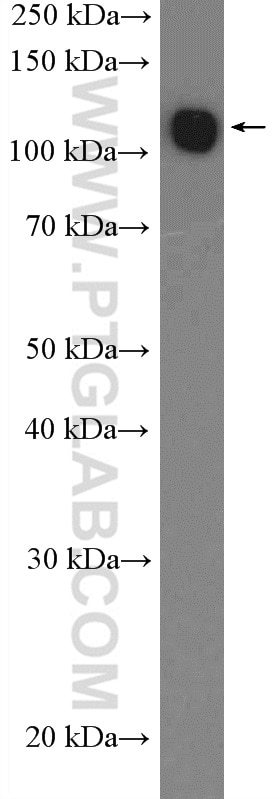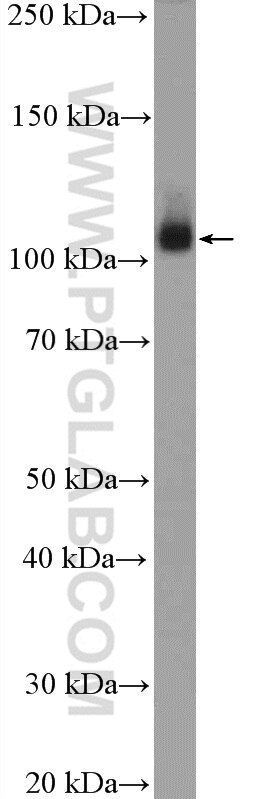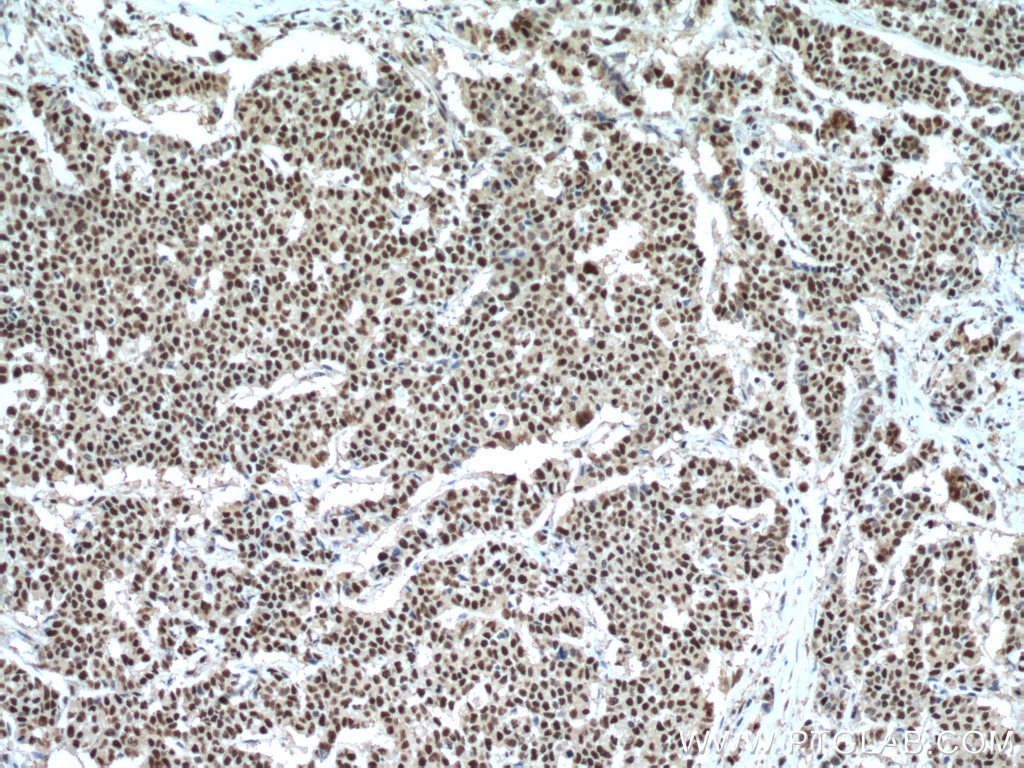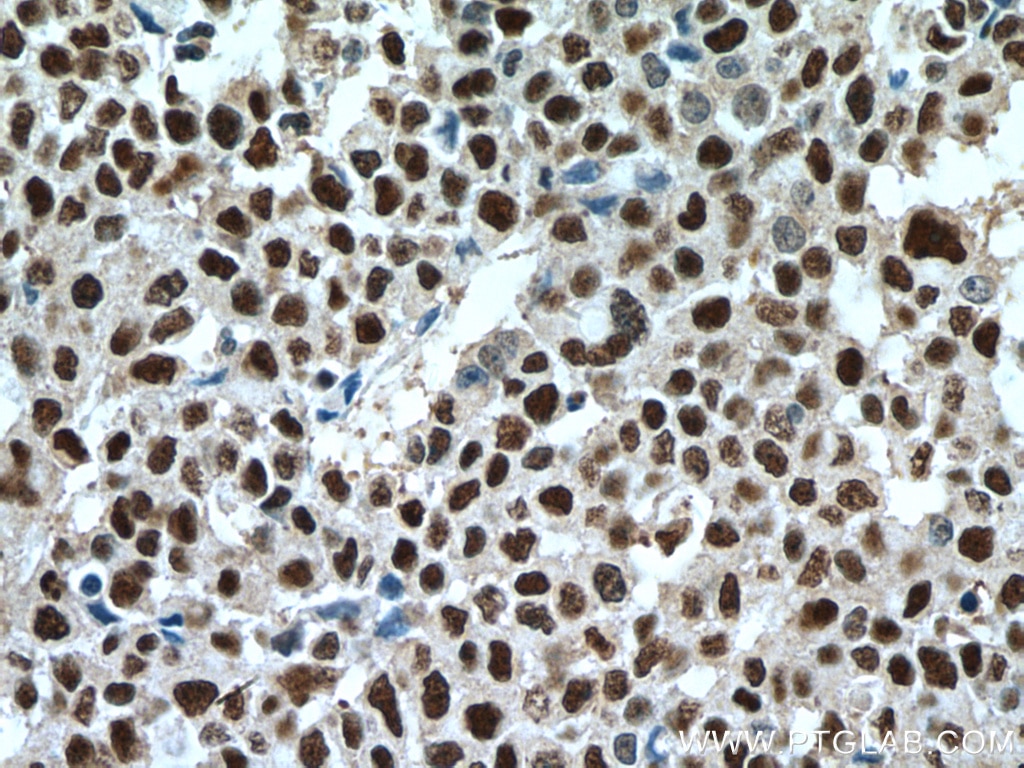- Phare
- Validé par KD/KO
Anticorps Polyclonal de lapin anti-UBE1
UBE1 Polyclonal Antibody for WB, IHC, ELISA
Hôte / Isotype
Lapin / IgG
Réactivité testée
Humain, rat, souris
Applications
WB, IHC, ELISA
Conjugaison
Non conjugué
N° de cat : 15912-1-AP
Synonymes
Galerie de données de validation
Applications testées
| Résultats positifs en WB | cellules HL-60, cellules HEK-293, cellules HeLa, tissu de côlon de souris, tissu splénique de rat, tissu splénique de souris |
| Résultats positifs en IHC | tissu de cancer du côlon humain, il est suggéré de démasquer l'antigène avec un tampon de TE buffer pH 9.0; (*) À défaut, 'le démasquage de l'antigène peut être 'effectué avec un tampon citrate pH 6,0. |
Dilution recommandée
| Application | Dilution |
|---|---|
| Western Blot (WB) | WB : 1:500-1:3000 |
| Immunohistochimie (IHC) | IHC : 1:50-1:500 |
| It is recommended that this reagent should be titrated in each testing system to obtain optimal results. | |
| Sample-dependent, check data in validation data gallery | |
Applications publiées
| KD/KO | See 1 publications below |
| WB | See 8 publications below |
| IHC | See 3 publications below |
Informations sur le produit
15912-1-AP cible UBE1 dans les applications de WB, IHC, ELISA et montre une réactivité avec des échantillons Humain, rat, souris
| Réactivité | Humain, rat, souris |
| Réactivité citée | Humain, souris |
| Hôte / Isotype | Lapin / IgG |
| Clonalité | Polyclonal |
| Type | Anticorps |
| Immunogène | UBE1 Protéine recombinante Ag8703 |
| Nom complet | ubiquitin-like modifier activating enzyme 1 |
| Masse moléculaire calculée | 1058 aa, 118 kDa |
| Poids moléculaire observé | 114-118 kDa |
| Numéro d’acquisition GenBank | BC013041 |
| Symbole du gène | UBA1 |
| Identification du gène (NCBI) | 7317 |
| Conjugaison | Non conjugué |
| Forme | Liquide |
| Méthode de purification | Purification par affinité contre l'antigène |
| Tampon de stockage | PBS avec azoture de sodium à 0,02 % et glycérol à 50 % pH 7,3 |
| Conditions de stockage | Stocker à -20°C. Stable pendant un an après l'expédition. L'aliquotage n'est pas nécessaire pour le stockage à -20oC Les 20ul contiennent 0,1% de BSA. |
Informations générales
UBE1(Ubiquitin-activating enzyme E1) is also named as A1S9T, UBE1 and belongs to the ubiquitin-activating E1 family. It catalyzes the first step in ubiquitin conjugation to mark cellular proteins for degradation and initiates the activation and conjugation of ubiquitin-like proteins. Defects in UBE1 are the cause of spinal muscular atrophy X-linked type 2 (SMAX2). UBE1 has two isoforms with the molecular mass of 118 and 114 kDa.
Protocole
| Product Specific Protocols | |
|---|---|
| WB protocol for UBE1 antibody 15912-1-AP | Download protocol |
| IHC protocol for UBE1 antibody 15912-1-AP | Download protocol |
| Standard Protocols | |
|---|---|
| Click here to view our Standard Protocols |
Publications
| Species | Application | Title |
|---|---|---|
Nat Commun DNA replication initiation factor RECQ4 possesses a role in antagonizing DNA replication initiation | ||
ACS Nano Graphene Oxide Causes Disordered Zonation Due to Differential Intralobular Localization in the Liver. | ||
Cancer Biol Med CSN6 promotes tumorigenesis of gastric cancer by ubiquitin-independent proteasomal degradation of p16INK4a. | ||
Am J Cancer Res The E3 ubiquitin ligase RBCK1 promotes the invasion and metastasis of hepatocellular carcinoma by destroying the PPARγ/PGC1α complex. | ||
Front Oncol Ubiquitin-Like Modifier Activating Enzyme 1 as a Novel Diagnostic and Prognostic Indicator That Correlates With Ferroptosis and the Malignant Phenotypes of Liver Cancer Cells. | ||
J Mol Med (Berl) Hyper-SUMOylation of SMN induced by SENP2 deficiency decreases its stability and leads to spinal muscular atrophy-like pathology. |
